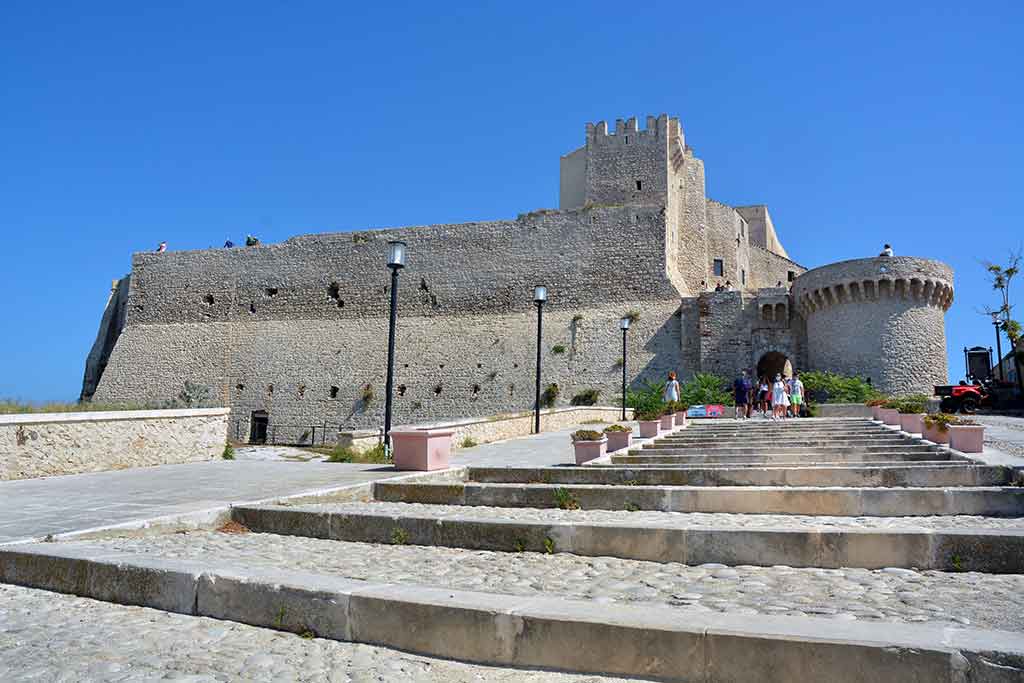
Choosing the Tremiti Islands as a tourist destination one is expected - rightly - to find beautiful natural landscapes. But we should not underestimate also the historical and artistic aspect that finds its main expression in the monumental remains of the Island of San Nicola, administrative center (and former criminal colony) of the archipelago. Those who choose San Nicola knows that they find the historical root of the Tremiti: the island, as well as for the natural landscapes, is in fact renowned for its castles, churches, towers, ancient city walls, located especially on the eastern side.
From a geographical point of view, San Nicola is characterized by a rocky and jagged coast with many points overlooking the sea: the entrance route & amp; egrave; the marina to the east, from which it is possible to go up to the town. Next to the pier, the Grotta di San Michele is very special, with its unique shape reminiscent of a skull and water of an intense turquoise color. Torrione del Cavaliere del Crucifix: the tower set to defend the monks is surrounded by imposing walls, like other historic buildings.
On the lintel of the front door there is the inscription “Cotteret et Confriget “, that is, “it will break and he will shred”, reported to the knight in respect of anyone who had violated the threshold. Castello dei Badiali: constitutes the work of further fortification of the island, wanted by Charles D'Anjou under the order of the Cistercians to reject external attacks. The fortress is surrounded by the high walls of the city. It is worth noting a long tunnel whose outlet is not exactly known, probably another escape route for the friars in the event of an attack or secret storage of jewelry and value. Also nice to see is the cd cistern. Sundial, perhaps used to point the time and about 17 meters deep. Abbey of S. Maria: masterpiece of the Benedictines first and the Lateran Canons, then, built in 1045 at the point marked by a hermit (thanks to the appearance of the Madonna) as the one in which to find the treasure of Diomedes.
Perfected a few years later with Renaissance decorative motifs of Veneto-Tuscany origin, it is composed of three naves and inside are mainly found: the wooden cross representing the suffering Christ and the wooden statue of the Virgin and Child, of Byzantine inspiration; the wooden polyptych of the high altar and the well-known and admired Mosaic Floor. Tomb of Diomedes: Hellenic tomb with circular plan founded on the myth of the hero of the Iliad, the founder of the Tremites (also called Diomedee for this). You would have buried the hero together with his commanding staff. Legend has it that, in defense of the tomb, Venus had placed the Diomedeas, the companions of Diomedes, transformed into birds.
This guide has been translated automatically through a third party service. Visititaly offers these automatic translations to help site visitors, however the automatic translations may contain inaccuracies, errors or inaccuracies. You can contact us to report inaccuracies or errors and we will check the translation.